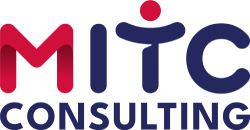Being both self-employed and employed in Switzerland, is it possible?
Spoiler: yes, but under certain conditions.
Which ones? What are the tax and social implications? What types of status allow you to combine these activities?
Read all about it in this article.
Being self-employed and employed: exceptions and limits
In Switzerland, multiple carreers are permitted.
You can carry out a self-employed ancillary activity alongside your salaried activity in Switzerland, with the exception of a few situations that we will mention right now.
- This ancillary activity competes with that of your employer: :
Chances are that your employment contract includes a non-competition clause stipulating that you are not allowed to engage in any other activity related to your sector for the duration of your contract or even beyond.
- This ancillary activity may have an impact on your involvement at work and even on your employer’s reputation:
Management contracts often specify that the exercise of ancillary activities must first be authorised by the employer. If your employment contract stipulates this rule, check with your employer that you can pursue a parallel activity and ask for written approval from your manager. This will protect you and allow you to combine two activities without fear.
Becoming self-employed in Switzerland
When it comes to choosing your status, you have three options:
- Register as a self-employed person under sole proprietorship (raison sociale individuelle). This is the most common status used by freelancers. Note: you must be able to prove that you have at least three different clients (to avoid disguised salaried employment).
- Set up a general or limited partnership (Société en nom collectif or commandite). In this type of business, you need to be associated with one or more people and you need to draw up a partnership agreement under Swiss law. This status is less common.
- Join a wage portage (portage salarial) company. This last status is the most hybrid of the three: it allows you to be an employee in your own business and thus become self-employed. We’ll talk more about this below.
These three types of status can be divided into 2 specific types: self-employed people with a sole proprietorship (raison individuelle), a general partnership or a limited partnership (more information on legal forms in Switzerland) and employees who work under wage portage.
Employee with an ancillary self-employed activity: How does it work?
As both an employee and a self-employed person, what are the social security, pension and tax contributions like?
Tax and social security contributions
- For tax purposes, both salaried income and income from your second activity are taxable.
- Income from self-employment must be declared separately from other income on your tax return.
- This income is passed on to the social security authorities to determine the amount of social security contributions you will subsequently have to pay.
To make it easier to see the difference in taxation, it is advisable to separate the income and expenses relating to your secondary activity from your private expenses. It is therefore recommended that self-employed people open a separate account for their activity.
However, this is not compulsory, just as it is not compulsory to keep accounts for your secondary activity if it generates less than CHF 100,000.
Pension contributions
This is certainly where the situation is most unclear. Let’s try to give you some clarity!
As an employee, you are obliged to contribute to a pension fund, the second pillar, if your annual salaried income is equal to or greater than CHF 21,330.
As for your self-employed ancillary activity, you must declare an annual income of over CHF 2,300 to the “Assurance Vieillesse et Survivants des Indépendants” (AVS Indépendants) and pay – even if you are already contributing as an employee.
As a self-employed person, however, the second pillar will be optional.
We still advise you to contribute to the third pillar if your self-employed activity involves a reduction in your working hours as an employee, as this is logically accompanied by a reduction in your 2nd pillar contributions. Contributing to the 3rd pillar will allow you to compensate.
Wage portage: How it works
As an employee on a wage portage scheme, how does it work? Let’s take a look at the wage portage system and then explain how it works.
What is wage portage in Switzerland?
Wage portage (portage salarial) is a type of structure whose role is to oversee your professional activity as a self-employed person while giving you the status of an employee. The “porté” (the self-employed person in a wage portage situation) is therefore an employee, but manages his or her projects and clients completely independently. This type of structure also exists in France under the names of “portage salarial” and “coopérative d’activité”.
How does it work in practice?
In practical terms, you begin your collaboration by signing an employment contract with the wage portage structure, which sets out the terms of your relationship.
You then invoice your services in the name of the wage portage company, which is responsible for tracking your payments. Wage portage involves a tripartite contractual relationship between the contractor, the wage portage company and the client company.
Each month, and depending on the arrangement you decide to put in place (smoothing of your salary or irregular income), the wage portage company pays you the money collected on your behalf in the form of a salary.
What about contributions and pension?
Opting for wage portage means becoming an employee of the wage portage company.
This means that you benefit from the same employment contract and the same social security deductions as a “classic” employee on your payslip: you contribute to health insurance, unemployment and pension schemes, as well as having paid holidays.
You will also have to pay a commission on your earnings to cover the cost of managing your social security files – a small expense compared with the time spent on administrative procedures and the costs associated with an accountant as a self-employed person.
Like your other salaried job, you are deducted at source and contribute the same amounts. There is no distinction between the income from your first and second paid employment.
The special case of cross-border workers
Are you from France and thinking of creating a status in Switzerland to work with companies of that nationality?
There are three possibilities.
- Create a “microentreprise” status in France and invoice in Switzerland. You will then pay your contributions in France.
- Create a sole proprietorship (raison individuelle) in Switzerland: it is possible to combine salaried employment in France with a sole proprietorship in Switzerland. To do so, you must be able to prove that you have a business address in Switzerland and at least three clients. In this case, you will pay your social security contributions and tax in Switzerland. Your income will then have to be declared in France, but the tax already paid in Switzerland will not have to be paid a second time: you will benefit from a tax credit.
- Join a wage portage company. By enabling you to obtain a Swiss employment contract, the wage portage company will open the door to other tools, such as the G work permit. In this case, you will obtain the advantages of employee status in Switzerland and you will pay taxes and social security contributions in Switzerland. As in the previous case, your income will then have to be declared in France, but the tax already paid in Switzerland will not have to be paid a second time.
📌 For more information on becoming self-employed in Switzerland as a foreigner, please read this article.




